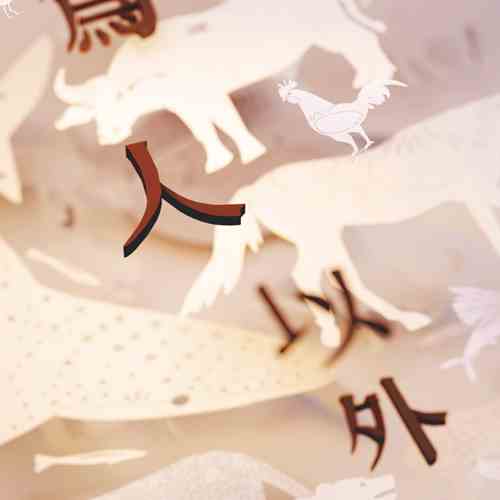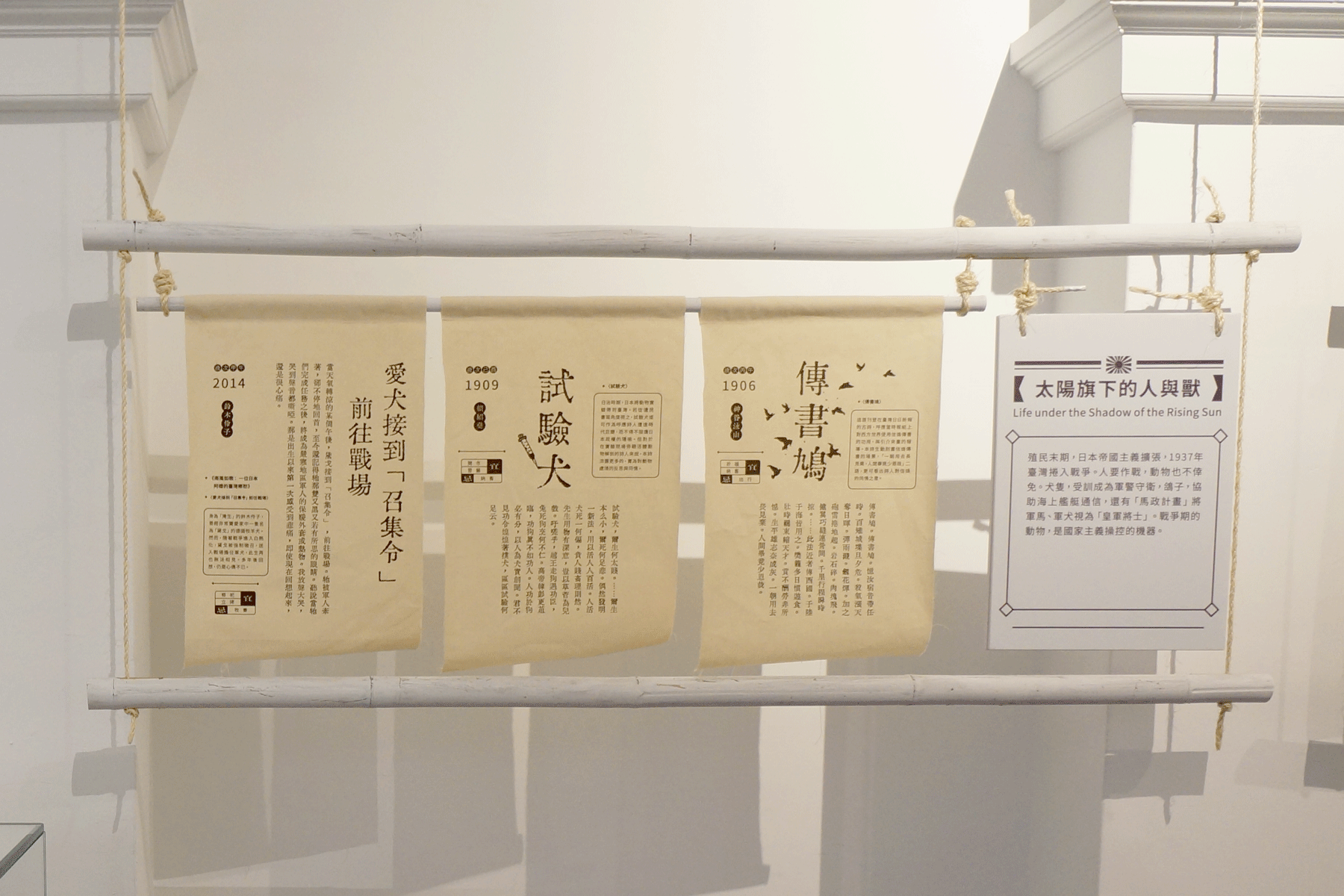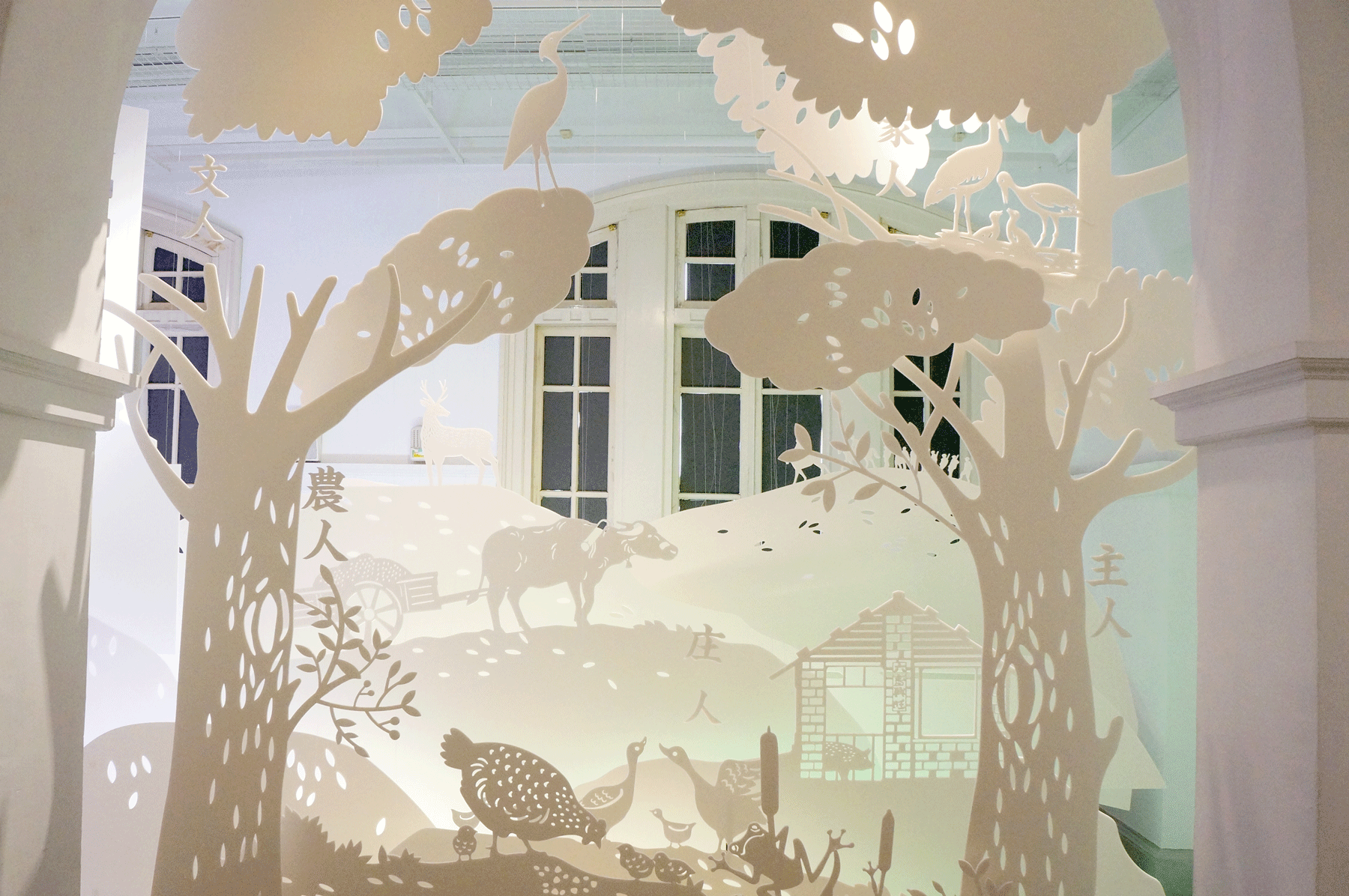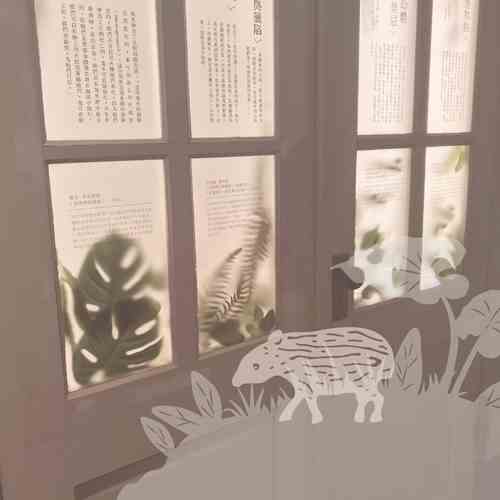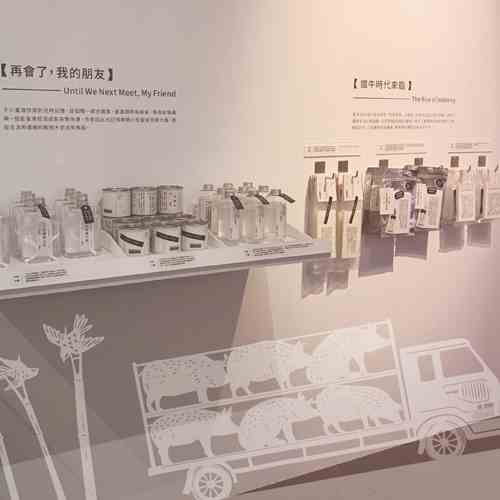Beast and Valued Friend|A Life of Toil for Both Man and Beast|Life under the Shadow of the Rising Sun|Dominion over Nature: Animals as an Asset
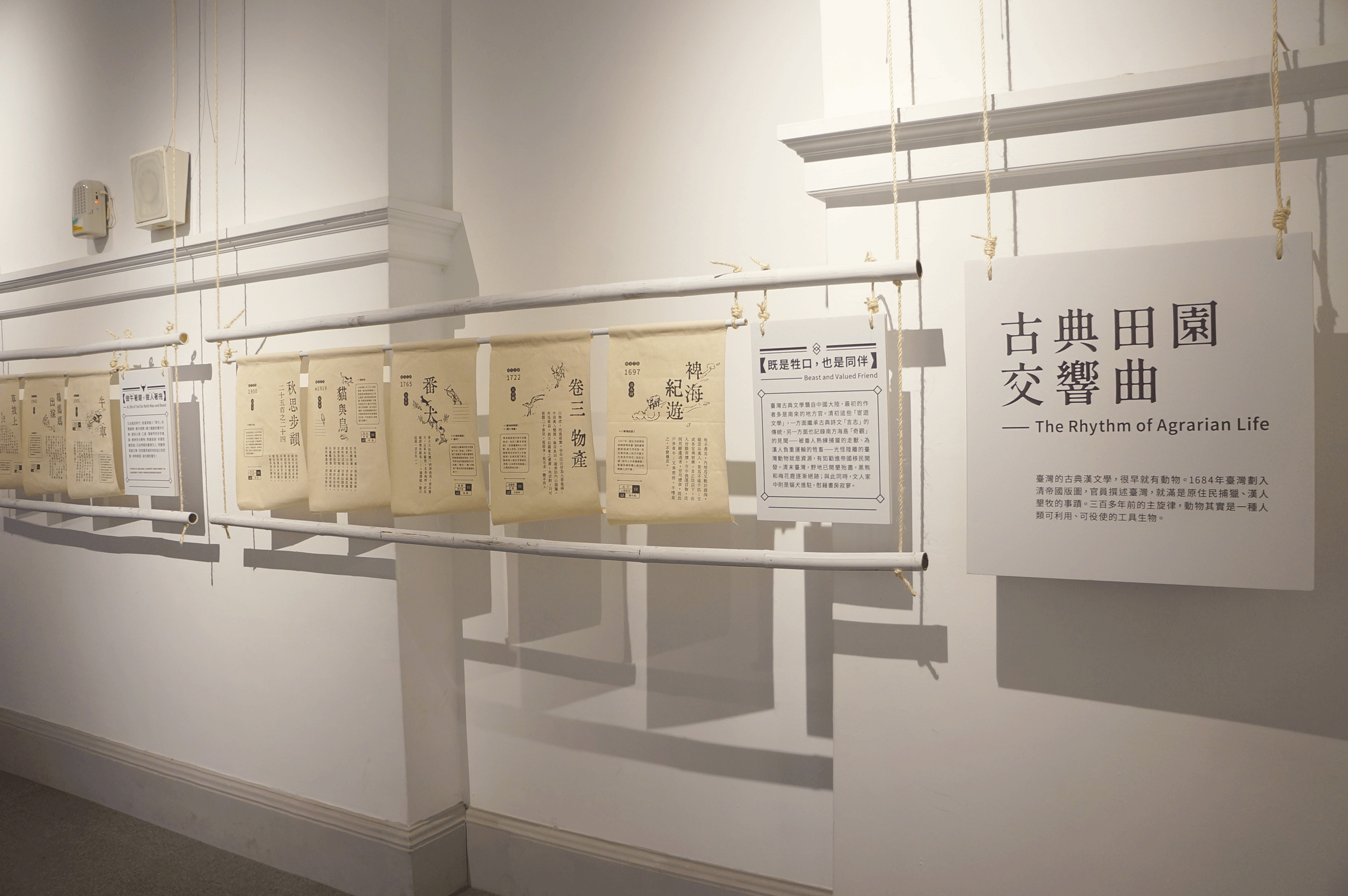
Animals appeared early on in Taiwan's Han Chinese literary landscape. Chinese official writings on Taiwan, replete with descriptions of indigenous hunting practices and of Han Chinese clearing new farmland from the wilderness, were published soon after the island was appended to the Chinese (Qing) Empire in 1684. In these early narratives, penned over three centuries ago, animals were largely portrayed as resources to be either harvested or used as beasts of burden by homesteading immigrants.
✧ Beast and Valued Friend
Classical literature in Taiwan was transplanted from China and, especially during the earliest decades, mostly by imperial officials. The so-called "travel literature" from this period, while continuing the self-reflective format prominent in contemporary Chinese literature, reflect the thoughts and observations of authors regarding Taiwan's "exoticism". The strange beasts hunted by island "savages" were prized as trophies by those back in China. The animals of distant Taiwan were resources awaiting profitable exploitation by the growing number of Chinese colonists. By the late Qing Dynasty (late 19th c.) most of Taiwan's arable land had come under cultivation and iconic wildlife such as the Formosan black bear and sika deer had largely disappeared in the wild, leaving a void in poetry and prose that was ultimately but inadequately filled by household pets such as cats and dogs.
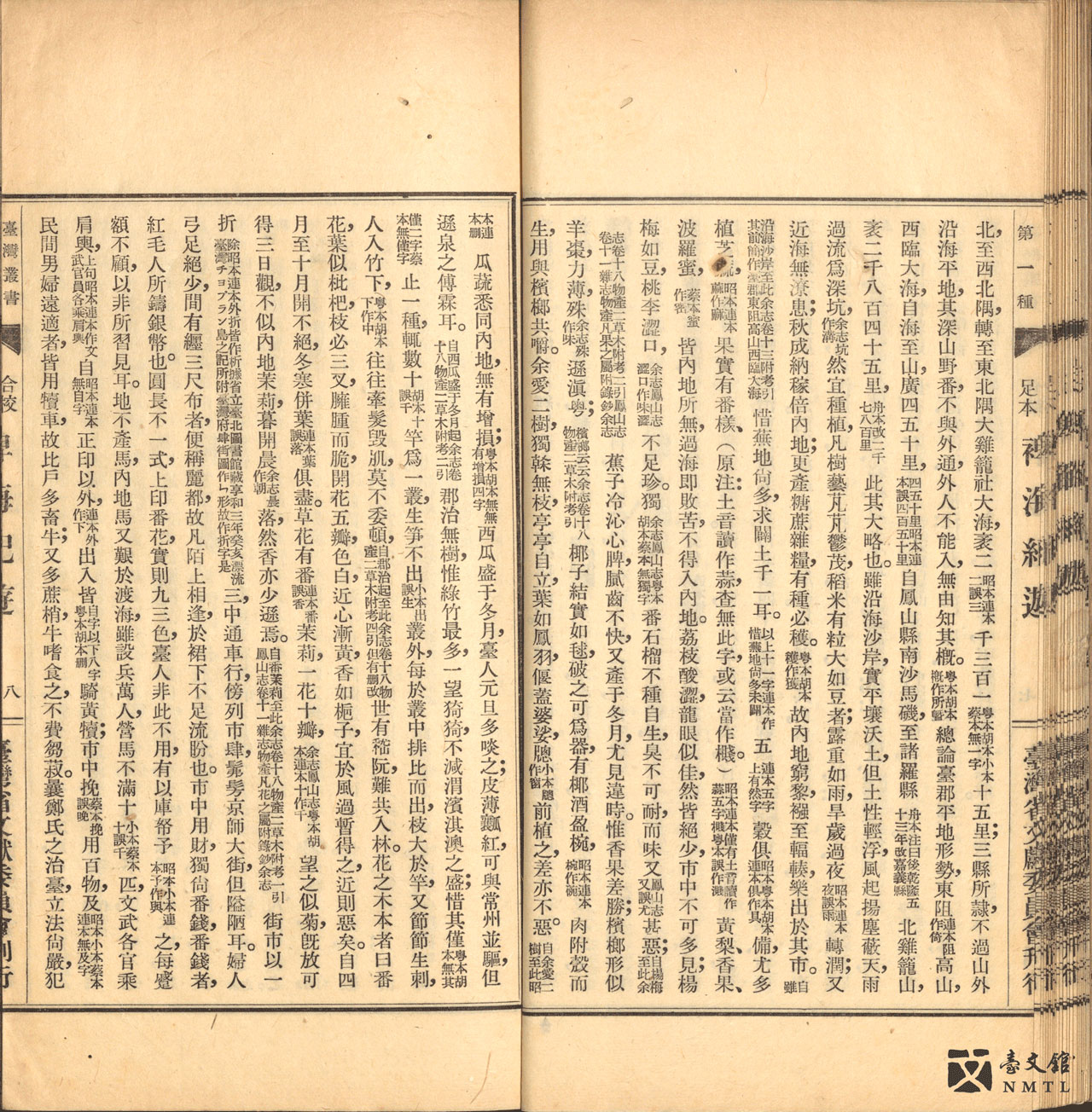
⁍ SMALL SEA TRAVELOGUE: THE COMPLETE EDITION by Yu Yung-ho
During Kangxi 36 (1697), Yu Yung-ho crossed the sea to Beitou to source for sulfur. He travelled in Taiwan for 8.5 months and put together his experiences into an account of his trip as THE DIARY OF SULPHUR MINING, also called SMALL SEA TRAVELOGUE. It is considered Taiwan's first full-length travelogue. This selection consists of 48 poems and 19 prose pieces, detailing what he saw and heard throughout his trip. The poems speak of his thoughts and feelings, and also lead us into the early history and culture of Taiwan. It is a representative work of classical literature of the time. There are details on the natural environment and animals that Yu saw in awe for the first time in Taiwan. (Donated by the family of Chou Ting-shan/ From the National Museum of Taiwan Literature permanent collection)
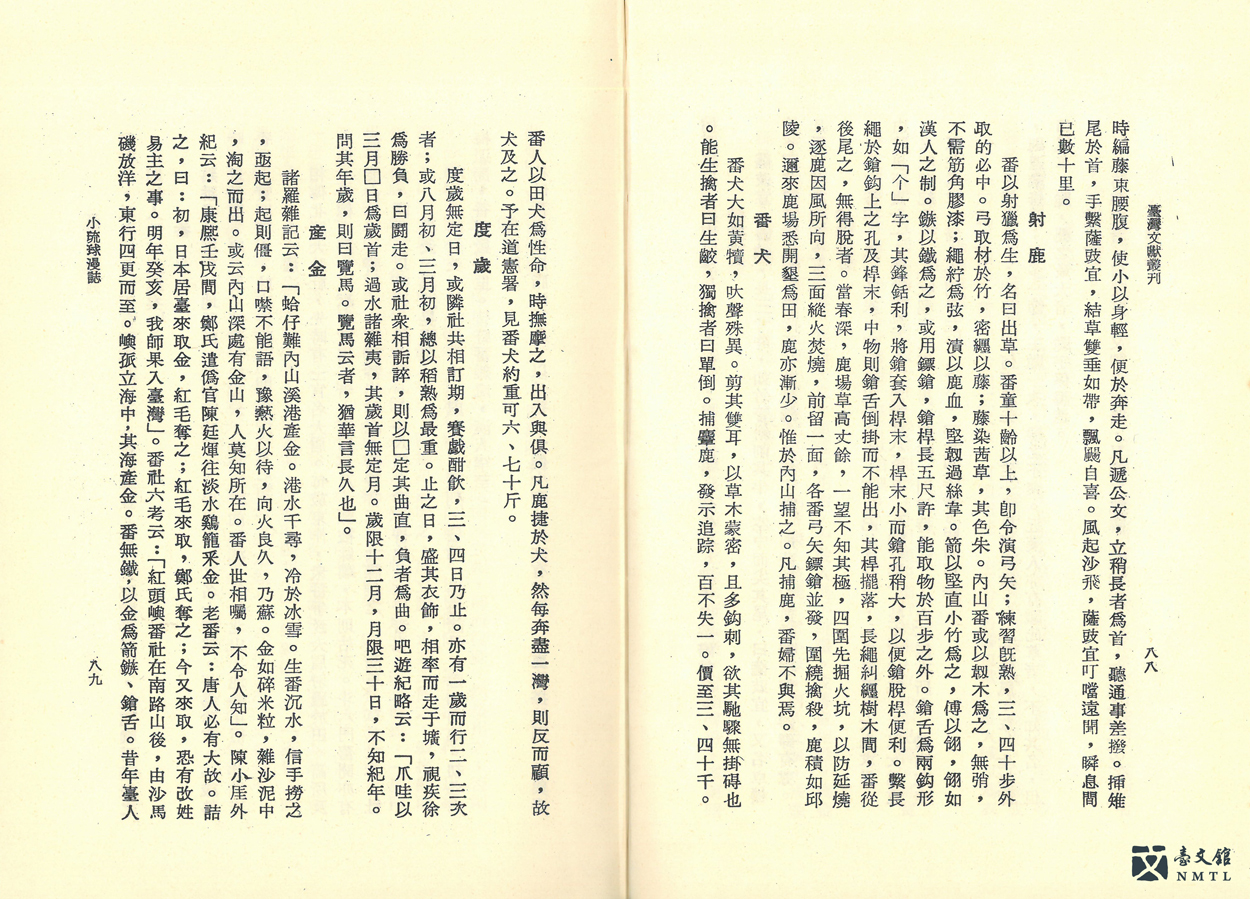
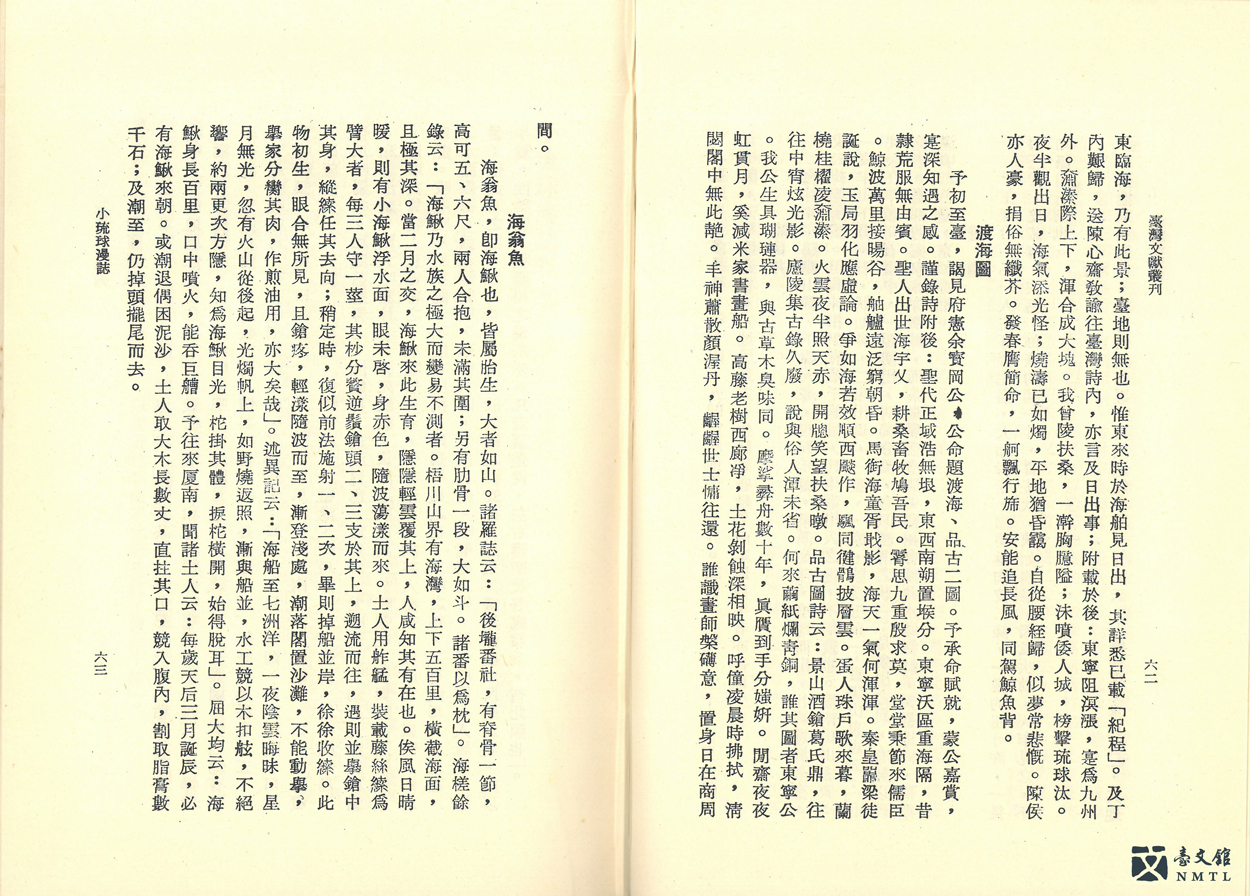
⁍ A CASUAL ACCOUNT OF LITTLE LIUQIU, by Chu Shih-chieh
This book was written by Chu Shih-chieh, the teacher of Fengshan County during the Qing dynasty. The book details his experiences and learning during his tenure in Taiwan. By including "Little Liuqiu" in the title of his book, the author attempted to make readers envision the location where he composed his work, a place where the sea waves engulfed the land every now and then, thereby also pointing out the geographical characteristics of the island of Taiwan. Chu spontaneously picked up different subject matter for this book, so that this piece of work feels at once all-inclusive and challenging to nail down its genre. He has included many specialties that are particular to, and still common in, southern Taiwan today, such as milkfish, whales, etc. (From the collection of the library at the National Museum of Taiwan Literature)
✧ A Life of Toil for Both Man and Beast
Its half century of colonial rule under Japan (1895-1945) profoundly shaped Taiwan's entry into "modernity". Traditional agrarian society, with its livestock and water-buffalo-powered implements, was sidelined by trains, factories, electricity poles, and other symbols of the 20th century. When woven into the literature of this period, wild animals, increasingly marginalized, diminished, and endangered, were frequently portrayed as compatriots in an increasingly dystopic colonial experience – downtrodden, yet with hope for a rebirth.
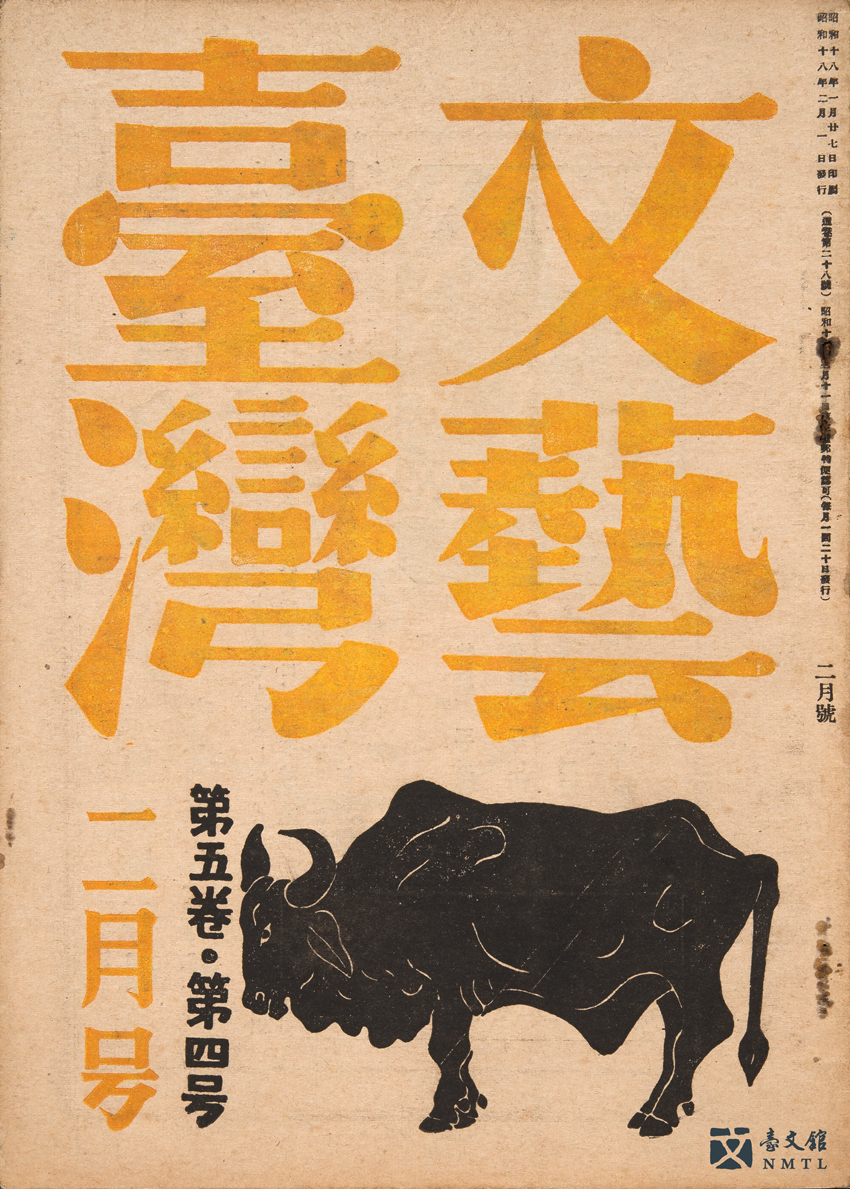
⁍ BUNGEI TAIWAN, Issue 5, No. 4, Volume 28
BUNGEI TAIWAN, a periodical issued during the Japanese Colonial Era, has included many poems and essays with animals as the theme. Images of animals also adorned the cover and the bookplates of the journal. (Donated by Chao Tien-yi / From the National Museum of Taiwan Literature permanent collection)
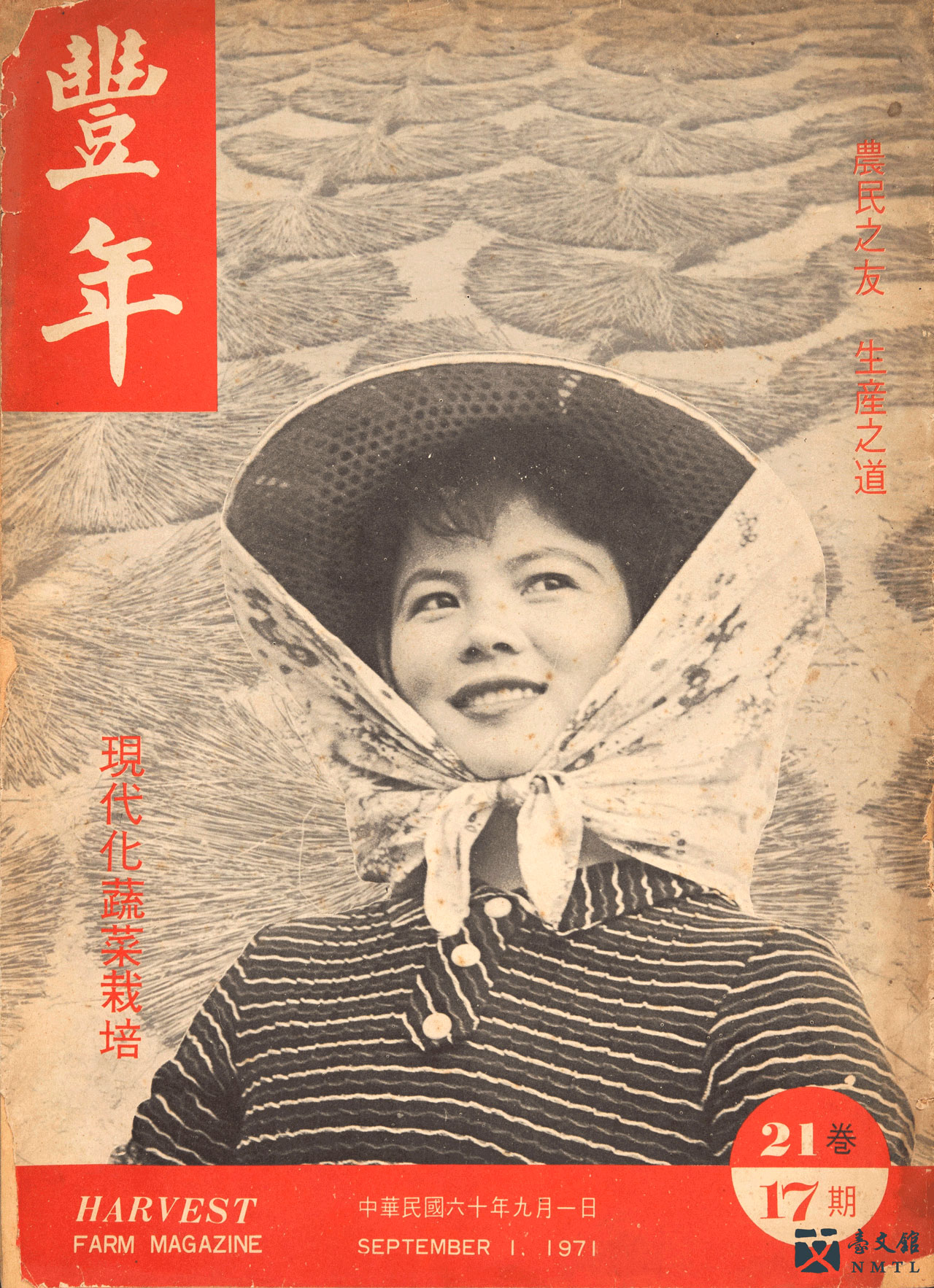
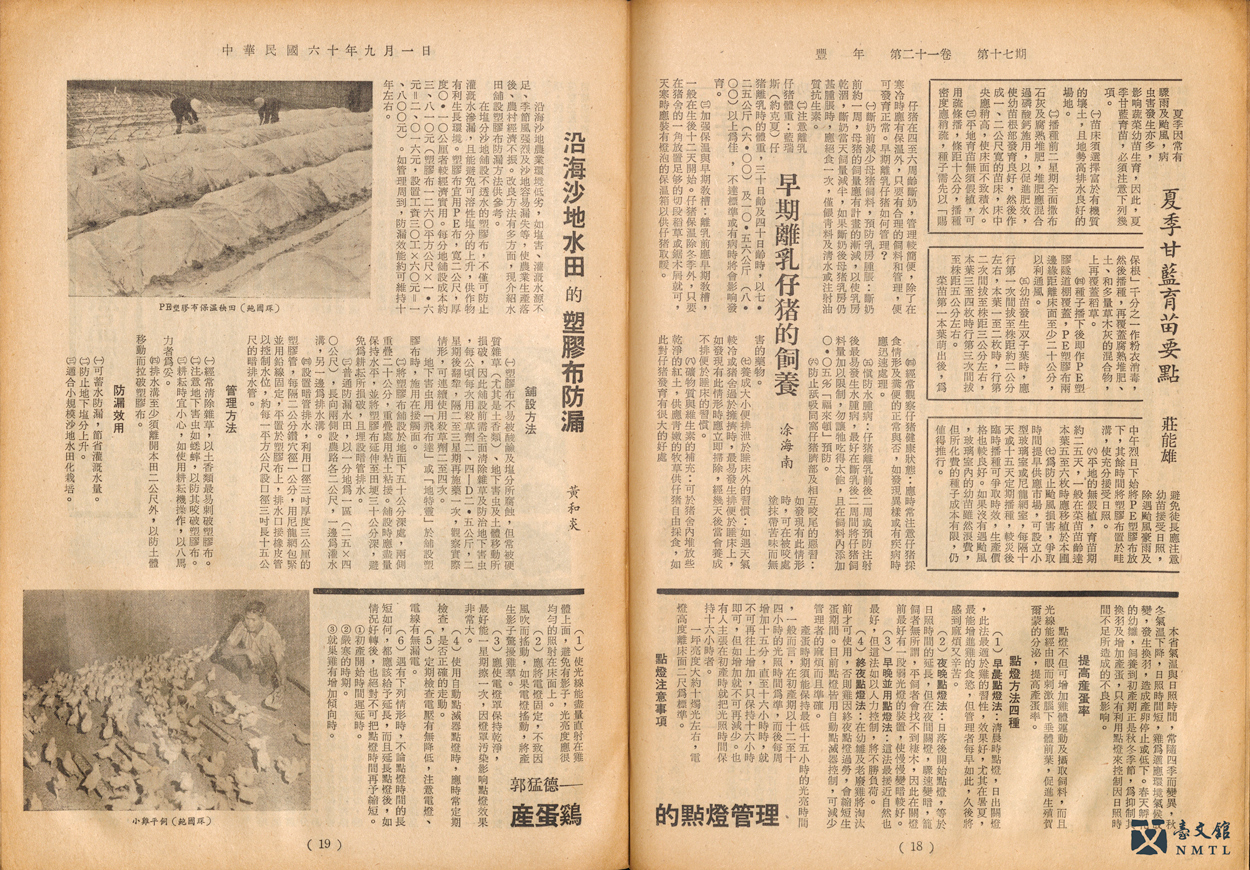
⁍ HARVEST, Volume 21, Issue 17
HARVEST is a bimonthly magazine published since 1951 with a focus on the production technologies of the agricultural industry, tailor-made for Taiwanese farmers. With consideration of the rural environment and farmers' reading habits, the magazine was initially published in large sized layout and big print, so that it could be easily read under the faint light in the countryside. To raise the interest of farmers in this magazine, many photos, pictures, and comics were inserted into the text. (Donated by Huang Te-shih / From the National Museum of Taiwan Literature permanent collection)
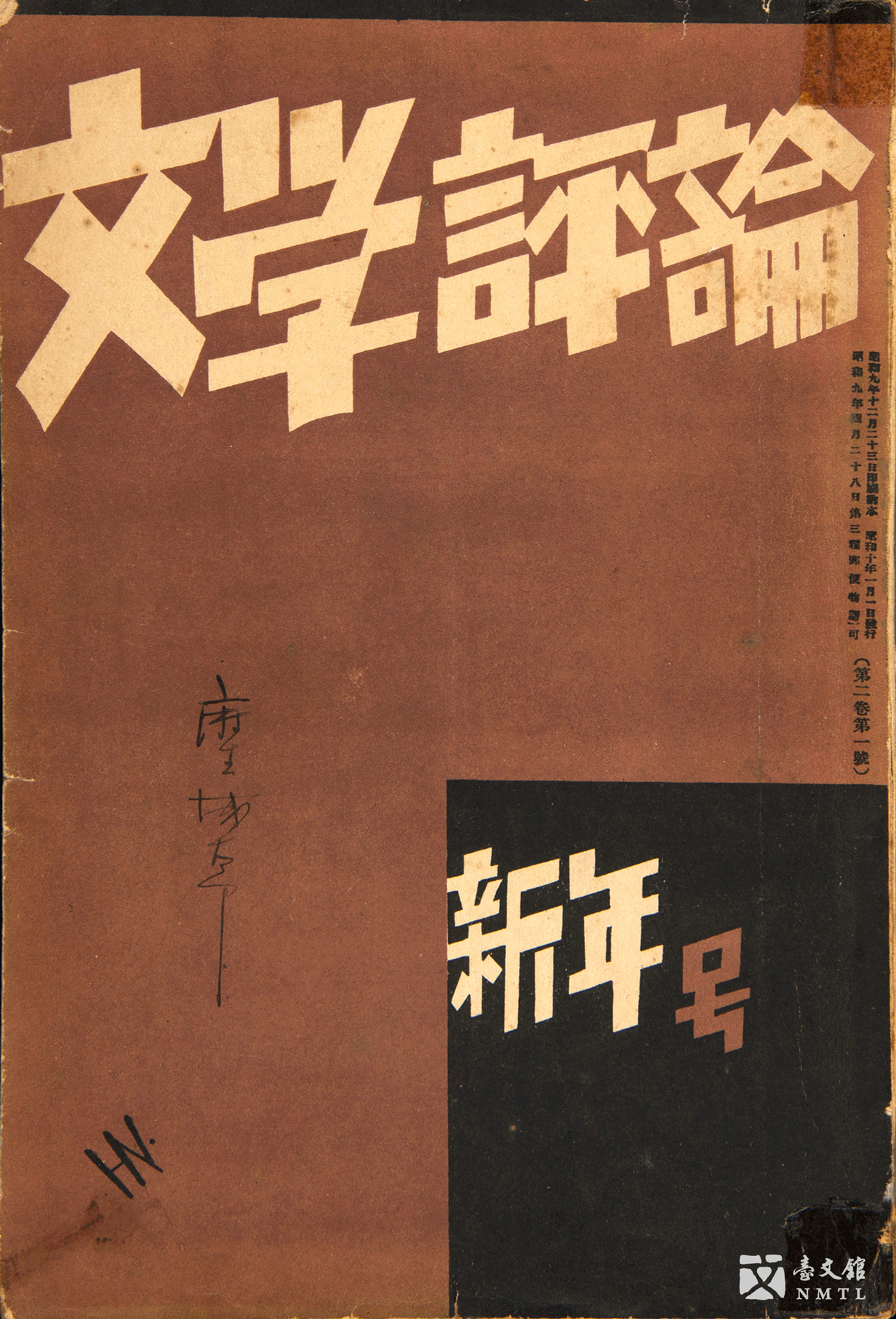
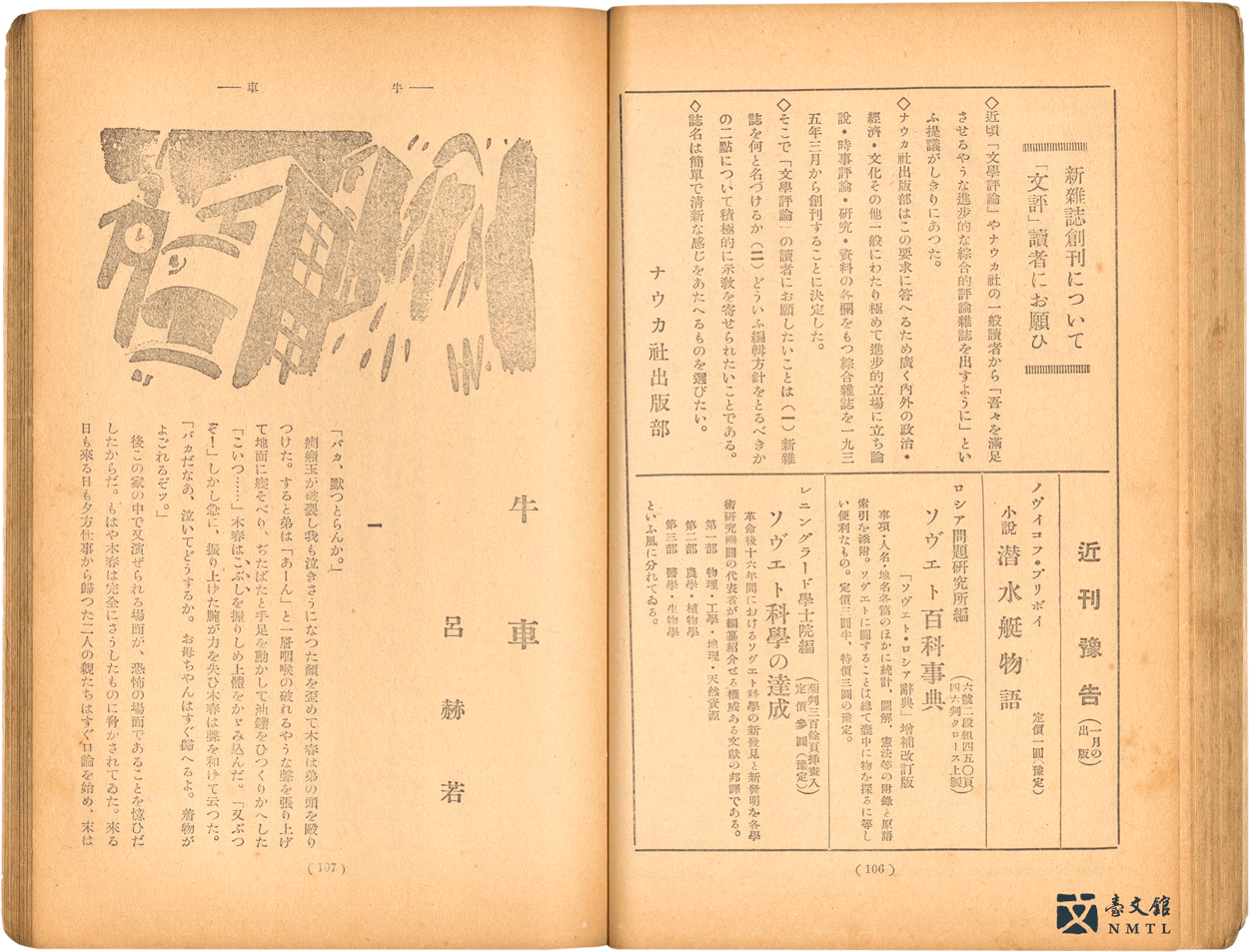
⁍ LITERARY REVIEW, Volume 2, No. 1, New Year Edition
"The Oxcart" by Lu Ho-jo was first published in the periodical LITERARY REVIEW. In this novel, one can see the changes brought about to Taiwan by the industrialization and legislation introduced under the rule of the Japanese government. The oxcart then lost its importance as a means of transportation; this was also an implication of a waning society that had depended on farming and, along with that, the function of the ox. Thereafter, this animal's role moved on from assisting human beings to being served at the table. The Japanese government had promoted the consumption of beef through periodical articles, news, advertisements, and writer's journals. (Donated by Kawahara Isao/ From the National Museum of Taiwan Literature permanent collection)
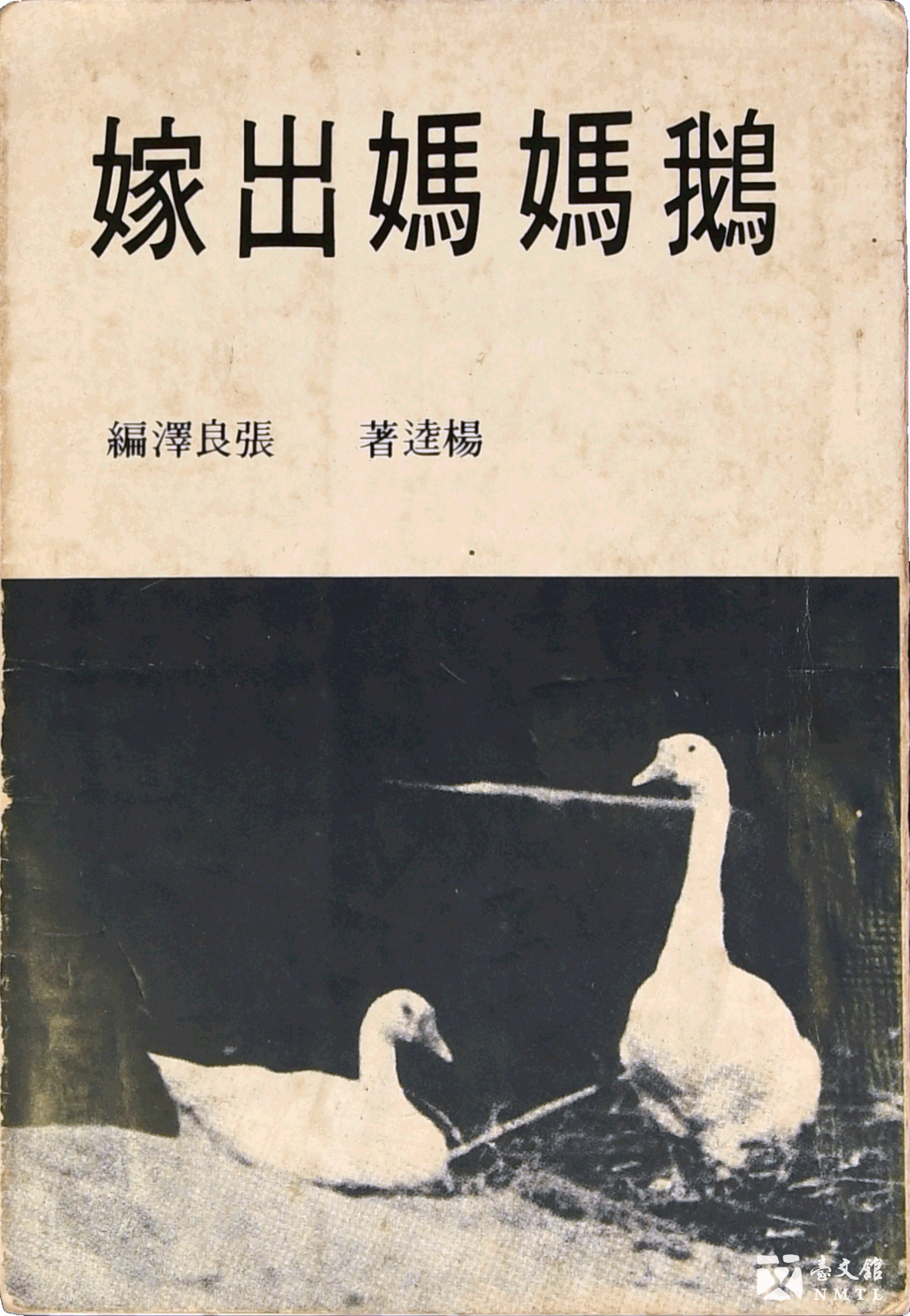
⁍ THE MOTHER GOOSE IS MARRYING by Yang Kuei
Yang Kuei initially wrote it in Japanese, and published it in Issue 274 of the TAIWAN TIMES OF JAPAN in 1942. It was subsequently translated into Chinese in 1966. At the time of publishing, either at the first release during the Japanese rule, or later when being translated into the Chinese edition during the government of the Republic of China, the general population was in a weaker position and being suppressed, not unlike the mother goose. Yang alluded to many a forgetful mortal, who more often than not treated the weaker others and speechless animals in a similar way. (Donated by Lin Jui-ming / From the National Museum of Taiwan Literature permanent collection)
🎬 "The Mother Goose Is Marrying"
This song is performed by the singer Jutoupi (Chu Yueh-hsin), and is included in the album YANG KUEI: MOTHER GOOSE IS MARRYING. Producer Jutoupi invited singers at that time to interpret on the life and works of the respected writer Yang Kuei using folk music in various experimental styles. This album was the live recording from the "Yang Kuei Memorial Concert" held at the Audiovisual Theater of the National Taiwan University in 1993. (Provider: Index Crystal Rockers Alumni Association, Chu Yueh-hsin, Lin Liang-che)
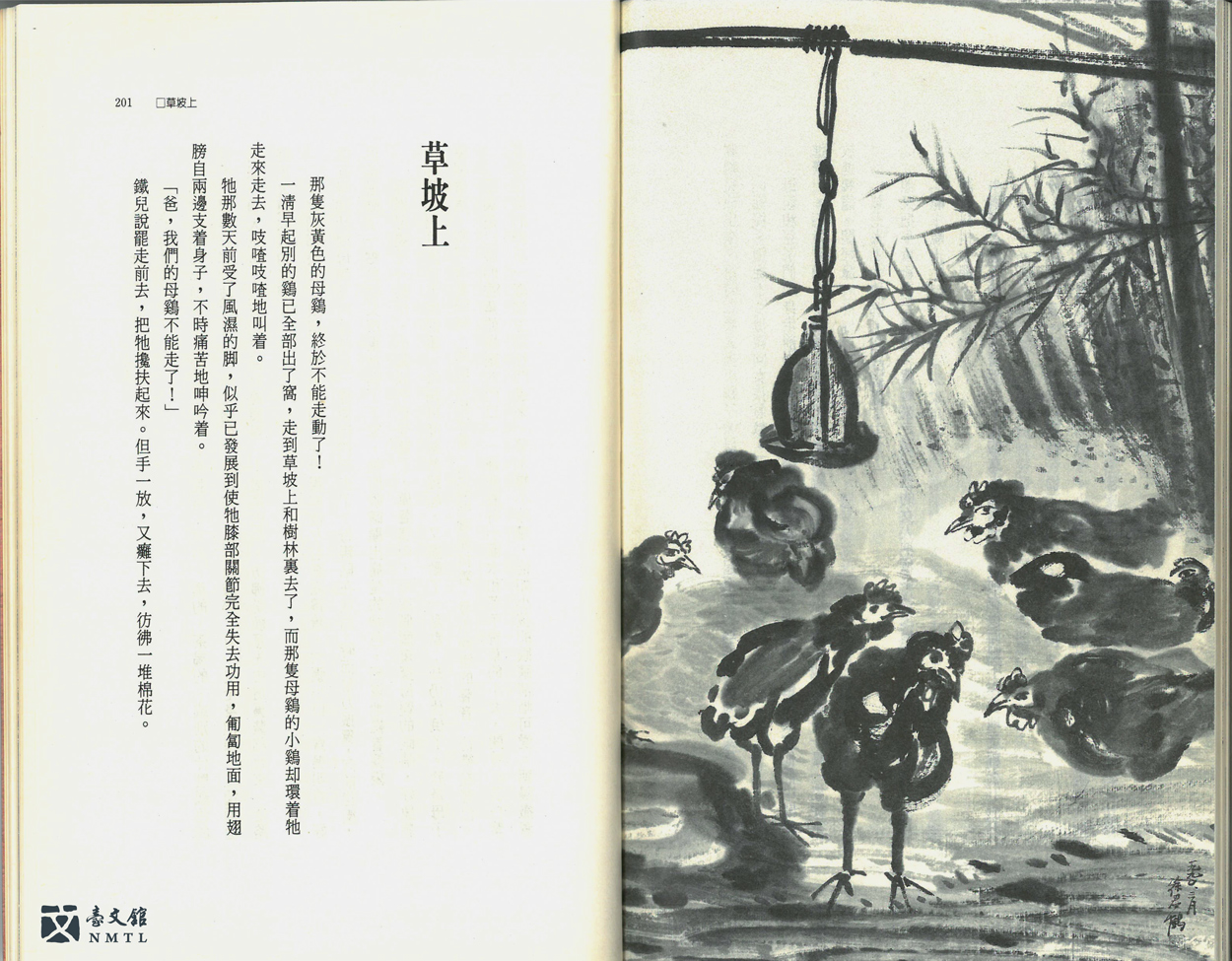
⁍ "Up on The Meadow Hill", by Chung Li-ho
This work is included in RESURRECTION, an anthology of Chung Li-ho's works. His works mostly depict the poor and harsh rural life of peasants in his works, seeming to reflect the writer's own life experiences, in an almost autobiographical manner. The illustrations of the book RESURRECTION, a fine complement to the literature itself, are drawn by the Meinong painter Hsu Chun-he. (From the collection of the library at the National Museum of Taiwan Literature)
✧ Life under the Shadow of the Rising Sun
Japanese expansionist ambitions launched the Second Sino-Japanese War in 1937. As men and women were called to service, animals also had their part to play. Dogs patrolled military posts and pigeons conveyed messages for naval ships at sea. Also, Japan's official "horse policy" called on the public to rear horses and dogs for military service. Animals during wartime were to serve the needs of nationalism.
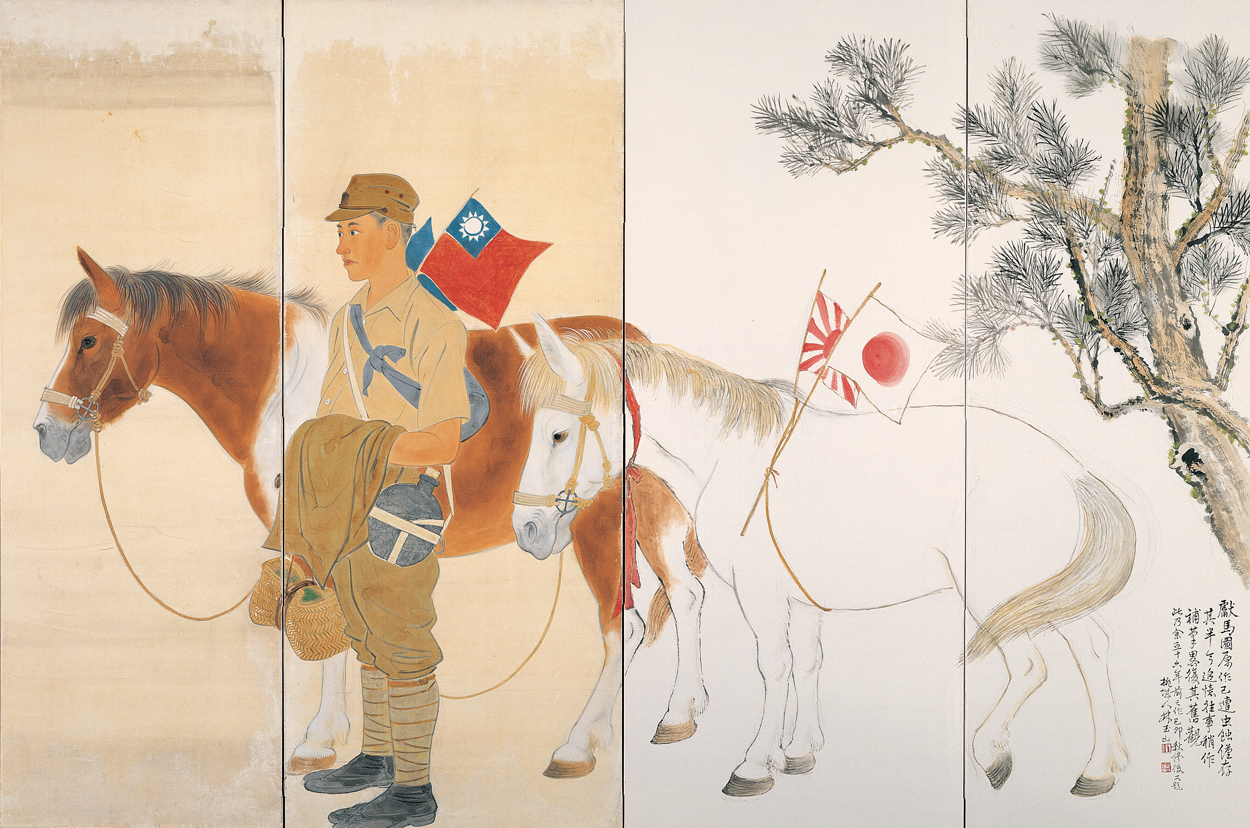
⁍ "Handing over Horses", by Lin Yu-shan (1943|glue color painting|131.7 × 200.2cm)
This is a four-folded screen glue color painting by the painter Lin Yu-shan in 1943. It was originally a record of the severe situation near the end of World War II when the Japanese government forcibly recruited civilian manpower and materials in their military preparations. When the February 28th Incident happened in 1947, people from all walks of life were shocked. The painter was worried that he would be arrested on some trumped up charge, so he changed the Japanese flag in the original painting into the flag of the Republic of China, and hid the painting in his home for many years. In 1999, the artist repainted the two damaged panels on the right side from memory and restored the Japanese flag from the original painting. The painting was donated to the Kaohsiung Museum of Fine Arts. It gives a historically significant annotation to how the old and the new, as well as Taiwan and Japan, are associated. (Provider: the collection of the Kaohsiung Museum of Fine Arts)
⨈⨈⨈ ⨈⨈⨈ ⨈⨈⨈
✦ Dominion over Nature: Animals as an Asset 𓁍 𓃗 𓅼 𓃡
From the start of Han Chinese settlement in the 17th century until the mid-20th century, Taiwan society was agrarian. During this period, animals in literature were mainly portrayed either as "things" to be exploited (for food, skins, medicine or labor) or as cherished companions. The canine and feline companions of Han literati, the water buffalo cherished by Han farmers, and the sheepdogs beloved by Taiwan's Japanese colonial rulers all made their mark on Taiwan literature during this time.
As Taiwan's agrarian society gave way to industrial and urban societal structures after the war, animal literature too underwent a dramatic transformation.

